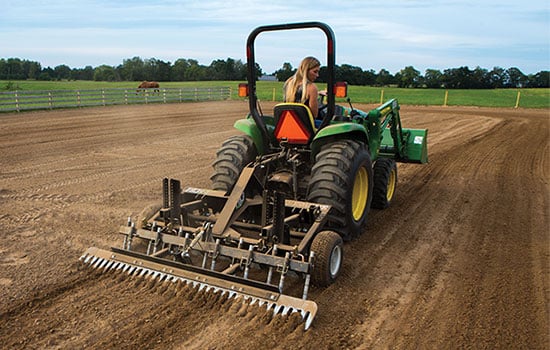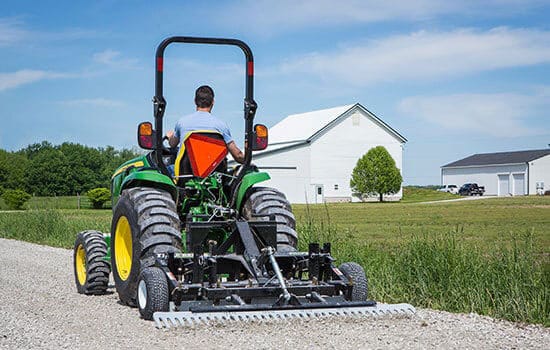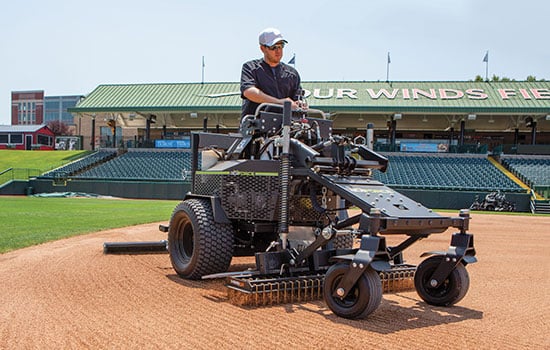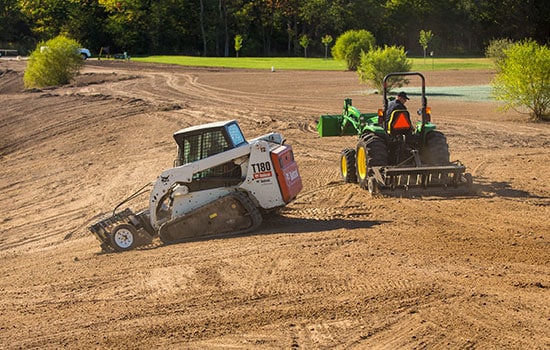Jamie Mehringer – Discusses Infield Surface Maintenance Equipment
Transcript
I’m Jamie Mehringer, President J&D Turf; full-service, construction, renovation and maintenance company based in Indianapolis, Indiana, specializing in sports fields. Really, there’s two different ways of maintaining an infield. There’s renovation or what I call once or twice a year work, and there’s maintaining the top quarter to half inch. And there’s a big difference between the two. If you have a properly designed infield that’s installed correctly and graded properly, piece of equipment like the VibraFlex from ABI Sports Turf is a great piece of equipment to break up and loosen that top quarter to half inch on a daily or weekly basis.
What you want to avoid is coming in and working up an inch or two inches deep, because what that will do is cause your grade to fluctuate and move around as you’re starting to drag your fields and get that material back firm. The biggest issue that I see across the Midwest, and really across the country, on poorly performing in fields is the end user keeps the infield mixes too loose. And we see that a lot from clients and customer saying, well, we want to soften our infield mixes up for playability. The best way to soften an infield mix is to add moisture, not to loosen it. Because the best example is you loosen your infield mix. You play a double hitter and you have 10 kids sliding into second base. Your second base area is immediately going to be below grade, versus watering that area and softening it for the athletes, and as they slide, it’ll be a softer surface.
One thing that applies from high levels down to youth play is when you go to professional facility are high and college facility, the things that they do before the game. The last thing they do is water their infield. They’re not working it up and creating, you know, an inch or two inches of loose material. And when you come to maintaining an infield on a daily and weekly basis, you really want to maintain that top quarter inch.
When it comes to maintaining moisture on an infield mix. We get the question a lot on how do we keep our infield mixes moist? And there’s different ways of doing it. And one method is using a quick coupler. It’s commonly see installed behind the pitcher’s rubber or a pitcher’s mound in baseball. And that is typically an inch or an inch and a half quick coupling that you insert a quick-connect key and a one inch, commonly referred to as a firehose, and come out and water your infield mixes by hand. In situations where you have one or two field, it’s a great way to apply water to a surface and hydrate that material. Another way, and we see this more and more, especially in the recreation area, is installing irrigation heads and their sole purpose is to water the skin.
So what I recommend to our clients is if you’re going to use infield mix irrigation heads or clay heads, if you will. You’re going to have to supplement that irrigation distribution more than likely with either a firehose based off a quick coupler, or the water trailer from ABI Sports Turf. The water trailers are a great fit for clients and end users that simply do not have water or do not have access to water on a daily basis. That can be very frequently on recreation style fields, little league fields, softball fields where you can pull into a hydrant and fill the water trailer. Or what we see is as you’re out dragging the field or as you’re mowing the infield or whatnot, you may be filling that water trailer off a hose spicket, etc. So you’re able to multitask and do multiple things at one time.
At the end of the day, the nice thing with the water trailer from ABI Sports Turf is it will apply water to your surface when you do not have reliable quick coupler or ground irrigation to apply water to your infield. And moisture management is the key to maintaining an infield mix correctly.
One of the benefits of the water trailer from ABI Sports Turf is the speed and ease of use, being the amount of water that can be applied in a short period of time and how even the distribution is when you’re applying the water. That is greatly beneficial in the recreation and park and rec settings where you may have a individual trying to use a firehose and the distribution pattern is inconsistent. So you have wet areas and in certain places and dry and others and also just the time it takes to drag the hose out, hook it up, takes two or three people typically on the fire hose because you don’t want to drag in across your infield as you water. Where the water trailer from ABI Sports Turf is a one man operation and allows you to apply water quickly and evenly across an infield surface, which is greatly beneficial when you’re trying to turn fields in a tournament type setting and get them ready for the next game.
The nice thing with the ABI force is the operator is standing either right over the top or slightly behind the engaging tools of the ABI Force. So what it eliminates are the days of looking behind as you are trying to condition, drag, renovate an infield mix. The nice thing with the ABI force is the down pressure has with the coiling action, which makes it a very nice tool to use not only in maintenance but also renovation. As we talked earlier, when it comes to infield maintenance, the top quarter to half inch is where you’re focusing. When it comes to renovation, the ABI Force allows you to engage and get deeper into the soil profile, allowing you to work up an infield mix in advance of renovation. The nice aspect that we use with the ABI Force is using the profile blade to work up a material before we add new infield mix. It’s common that the infield mix will get firm, and the profile blade allows you to loosen the infield mix columns in advance of renovation.
The infield mix maintenance and renovation tools that you see on Infield Rascal is also on the ABI Force. Both the VibraFlex and the profile blade can be interchange between the two tools. Both the Infield Rascal and the ABI Force have different finishing tools to finish your infield mix on a daily basis, from the coco mat to the rigid mat drag to the finishing broom.
All of those pieces provide a slightly different finish based on your infield mixed profile. The coco mat performs very well in wet conditions and you’ll see those a lot if you’re watching a game on TV and they’re playing in the rain. The coco mat does a great job smoothing out wet conditioner. The rigid drag is a great tool and what I recommend in dry conditions because it’s got a bar in the front that will allow some basic leveling as you’re dragging your infield mix surface. Another great tool to finish is the fine finishing broom. It also does a great job and dry weather conditions to eliminate ridges and the conditioner and create a nice finished product.
The ability to not only maintain your infield mix, but also go out into your turf areas with a rotary fertilizer spreader and also an aerifier. I’m a big proponent of at least once a year using a PTO driven aerifier to aerify turf areas. And most of our clients and end users can’t afford to do that. So they’re usually contracting that work out. The nice thing with the aerifier on the ABI Force being a ground-driver unit, is it can be run across turf areas. If you want to fertilize, the Force has a rotary fertilizer spreader at the front of the unit holding one hundred twenty five pounds of product, and it can fertilize turf areas in a very quick and efficient fashion. These features, along with the infield components, make the Force a great multi-purpose tool for any facility.
To learn more about myself and J&D turf. Please visit our website and also the Smart Turf blog.



